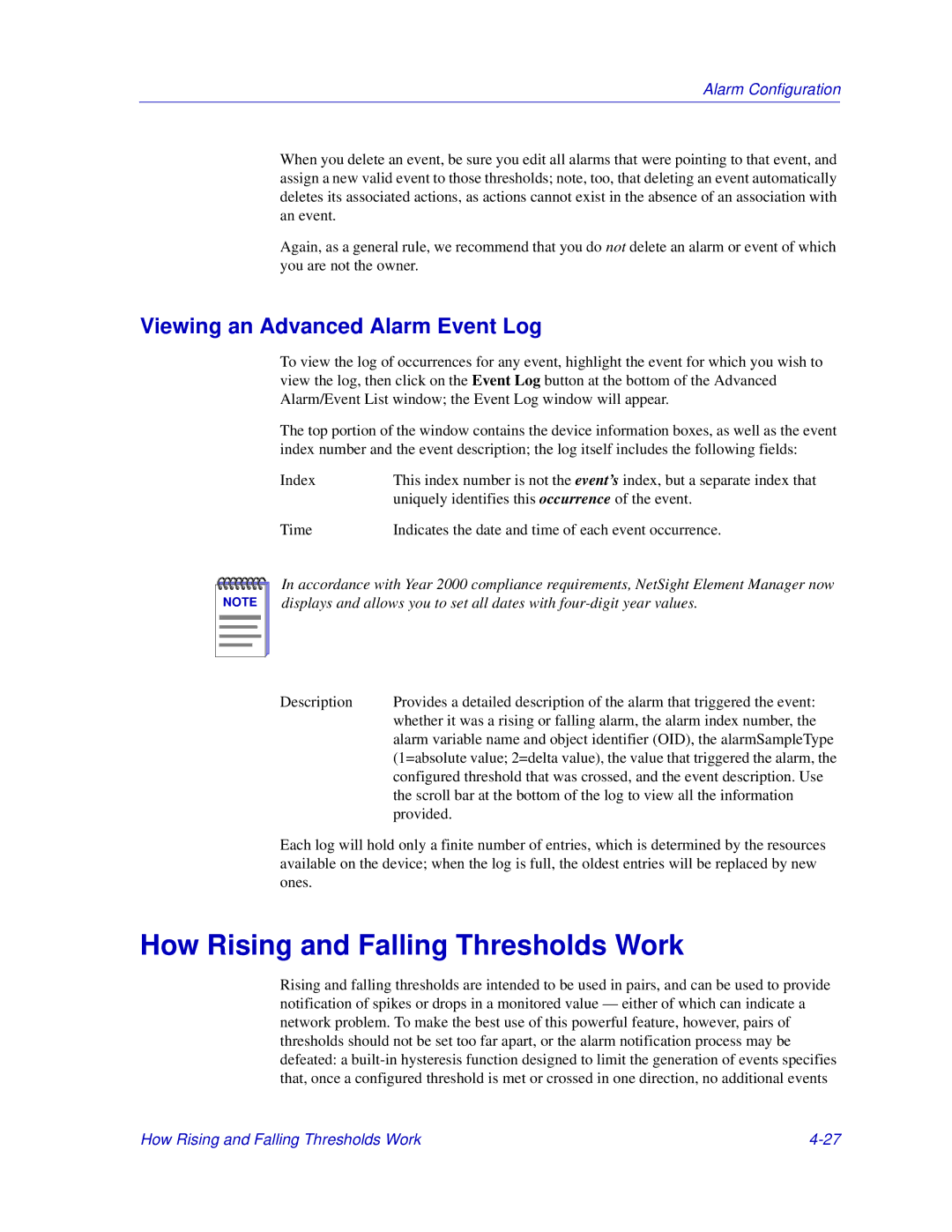
Alarm Configuration
When you delete an event, be sure you edit all alarms that were pointing to that event, and assign a new valid event to those thresholds; note, too, that deleting an event automatically deletes its associated actions, as actions cannot exist in the absence of an association with an event.
Again, as a general rule, we recommend that you do not delete an alarm or event of which you are not the owner.
Viewing an Advanced Alarm Event Log
To view the log of occurrences for any event, highlight the event for which you wish to view the log, then click on the Event Log button at the bottom of the Advanced Alarm/Event List window; the Event Log window will appear.
The top portion of the window contains the device information boxes, as well as the event index number and the event description; the log itself includes the following fields:
Index | This index number is not the event’s index, but a separate index that |
| uniquely identifies this occurrence of the event. |
Time | Indicates the date and time of each event occurrence. |
NOTE |
In accordance with Year 2000 compliance requirements, NetSight Element Manager now displays and allows you to set all dates with
Description | Provides a detailed description of the alarm that triggered the event: |
| whether it was a rising or falling alarm, the alarm index number, the |
| alarm variable name and object identifier (OID), the alarmSampleType |
| (1=absolute value; 2=delta value), the value that triggered the alarm, the |
| configured threshold that was crossed, and the event description. Use |
| the scroll bar at the bottom of the log to view all the information |
| provided. |
Each log will hold only a finite number of entries, which is determined by the resources available on the device; when the log is full, the oldest entries will be replaced by new ones.
How Rising and Falling Thresholds Work
Rising and falling thresholds are intended to be used in pairs, and can be used to provide notification of spikes or drops in a monitored value — either of which can indicate a network problem. To make the best use of this powerful feature, however, pairs of thresholds should not be set too far apart, or the alarm notification process may be defeated: a
How Rising and Falling Thresholds Work |
